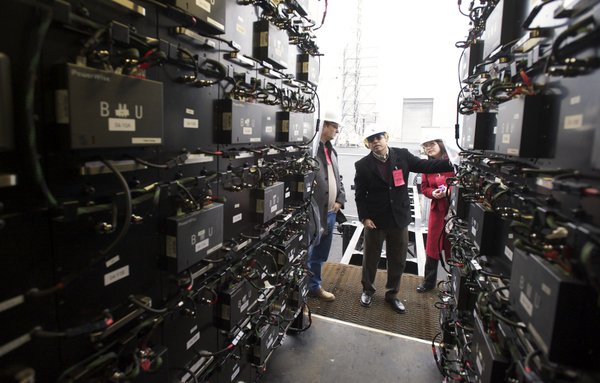forum
library
tutorial
contact

Why We Need a New Model for Electricity
by Christine HertzogGreenBiz.com, February 20, 2013
|
the film forum library tutorial contact |

|
Why We Need a New Model for Electricityby Christine HertzogGreenBiz.com, February 20, 2013 |
 Smart grid transformations in the U.S. have the potential to deliver true energy surety at a more distributed and transactive level than enjoyed in today's grid. The transformation drivers are technologies, regulations and finance mechanisms.
Smart grid transformations in the U.S. have the potential to deliver true energy surety at a more distributed and transactive level than enjoyed in today's grid. The transformation drivers are technologies, regulations and finance mechanisms.
At the recent DistribuTECH 2013 conference, Steve Berberich, president of the California Independent System Operator, offered a blunt and straightforward assessment of the electric sector. Essentially, industry must change because of drivers that range from economics (labor and unpredictable fuel costs) to technologies (renewables and energy storage) and regulations (environmental, health and safety).
Renewables are going to permeate the grid, and current technologies used in many natural-gas powered generation facilities are not designed for the start/stop operations needed to firm the amounts of intermittent renewable power envisioned in some energy plans. Therefore, we will need to figure out how to modulate load versus demand with other technologies, including storage and consumption management. Berberich also noted the need for a new grid business model, in which the volumetric billing structure must change.
That assessment covers quite a range of regulatory policy that covers federal, state and local levels. The Federal Energy Regulatory Commission has traditionally managed markets for electricity at the wholesale level, which typically occurs at the transmission grid. As technologies enable more cost-effective generation and storage of electricity within distribution grids, the jurisdictions between FERC, ISOs and local utilities blur. Who takes responsibility for transactive electricity markets within a state? If we make electricity a commodity that is dynamically priced for a greater range of participants (including residential consumers), what regulatory protections need to be put in place? Just how fungible is electricity: Is a negawatt equal in value to a kilowatt? Is a negawatt worth more if it avoids or postpones grid upgrades? What prevents deployment of a transactive type of electricity market at both transmission and distribution grid levels?
There's a very interesting Smart Grid Demonstration Project under way in the Pacific Northwest region that will answer some of these questions. This multiyear project recently entered its third phase focused on transactive controls.
Transactive controls are defined by the project as a distributed system that uses signals communicating the current and expected state of the grid, so that electricity users and energy resources can adapt to time-granular changes in grid supply and demand. About 12,000 smart grid-responsive assets including solar panels, smart appliances, energy storage units, PHEVs (plug-in hybrid electric vehicles) and backup generators are enrolled as electricity market participants. The project is collecting data about the benefits of approximately 80,000 utility assets ranging from smart meters and smart transformers to distribution automation equipment.
Grassroots action for distributed energy
While this top-down approach has many entities organizing numerous participants at the distribution grid level, grassroots activity can also encourage proliferation of distributed energy resources. A dedicated group of volunteers from the local Sierra Club chapter in Silicon Valley studied the permit processes and requirements to install solar PV panels on local residential and commercial rooftops.
From town to town in the chapter's three-county territory, they documented wide variances in paperwork, timelines and fees. As a result of this policy transparency, outlier towns modified processes, reduced fees and improved permit processing times. The California state government recognized that the lack of standardized fees could negatively impact their ambitious Renewables Portfolio Standards goals, and two new laws went into effect January that cap solar permit fees to reasonable cost recovery and create a standard for fee computations.
Smart grid technologies can transform our electricity grid from a very centralized generation model to a decentralized DER model. Regulatory and legislative policies will have to be created or modified to encourage (or mandate) utility actions to achieve this transformation. But there's one other important driver -- financial mechanisms -- that must be considered to successfully deliver the smart grid vision to the greatest number of participants and stakeholders. Stay tuned for more discussion of financial tools to enable smart grid investments.
learn more on topics covered in the film
see the video
read the script
learn the songs
discussion forum
